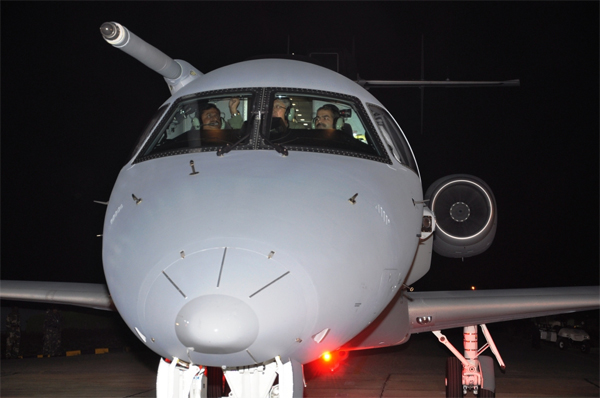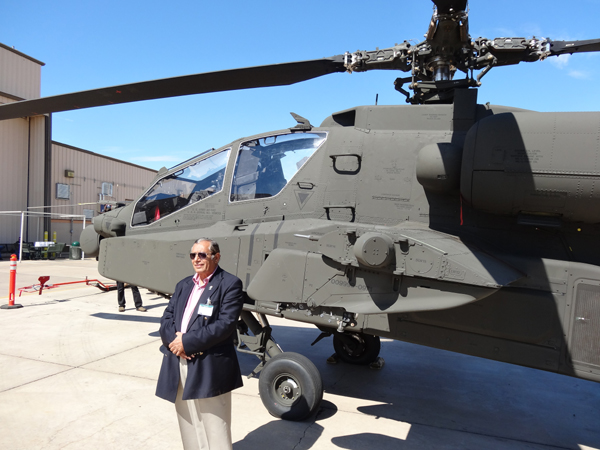|
Disclosing this, Vice Chief of the Air Force
VCAS, Air Marshal DC Kumaria, said at the Fifth
National Seminar on Aerospace Technologies(N-SAT.5)
recently that the decision applies on all current
and future acquisitions, whether combat jets,
transport aircraft, helicopters or other assets.
Only aircraft with this capability will be considered
for acquisition in future, he observed adding
that technology and strategic requirements have
evolved over time and that the IAF decision is
in line with the current thinking in military
aviation worldwide.
The N-SAT series on military aviation is held
by
India Strategic annually, around the
Air Force Day in October every year. Its emphasis
on building technological edge for the Indian
armed forces, and significantly, most participants
agreed that if an air force was not thinking of
20 years hence, they it is already behind times.
In the late 1970s for instance, Air Marshal Kumaria
pointed out, IAF actually sought removal of aerial
refueling plumbing in the Anglo-French Jaguar
aircraft even though they were meant for Deep
Penetration Strike role. Today, whether it is
the long-range aircraft or helicopters, the aerial
refueling capability is a key requirement.
It may be noted that IAF’s current acquisition
line includes Lockheed Martin C 130J Super Hercules,
Boeing C 17 Globemaster, Embraer 145 for electronic
radars, Agusta Westland’s VIP role AW 101
helicopters, new AWACS and midair refuelers (Airbus
Military MRTT or Russian IL 78) , Rafale fighter
jets, and Boeing’s Chinook and Apache helicopters.

The last four items are under various stages of
procurement.
The existing Mirage 2000, Su 30 MKIs and Jaguars
already have this capability while on the Mig
29s, its plumbing will be activated for midair
refueling during upgrades.
According to India
Strategic's Aviation Editor Air marshal
Ashok Goel (Retd), the inflight refueling capability
is standard worldwide now, and it would in fact
cost more to remove it than to have it while acquiring
and inducting new aircraft.
All NATO and US aerial instance for instance,
are equipped with midair or in-flight refueling
capability. In the Gulf and Afghan operations,
aircraft were able to conduct multi-mission strikes
during single flights.
“This in-flight refueling capability,”
Air Marshal Goel observed, “literally has
significant and far-reaching implications, enabling
modern aircraft to cover long distances 360 degrees.”
It may be recalled that thanks to IAF’s
IL 78 midair refuelers, its SU 30 MKI combat aircraft
have gone up to the US in 2008 to take part in
the multi-nation Red Flag exercise, and they will
do so again in 2013.

It may also be noted that midair refueling capability
will be on board Army and Navy combat assets as
well as the Chiefs of Staff Committee (COSC) already
has a tri-Service agreement on common parameters
for same and similar systems needed by them.
The Committee is currently headed by Chief of
the Air Staff Air Chief Marshal NAK Browne, and
he is on record as having said that there are
no differences between the three Services on acquiring
common systems with same or similar requirements.
Army sources also told India
Strategic that it will follow IAF’s
Air Staff Qualitative Requirements (ASQRs) while
going in for the Apache combat helicopters which
it wants in larger numbers than the current IAF
order of 22 machines.

It is understood that the refueling plumbings
would not be installed on smaller aircraft like
those which would replace Avro, or 197 light helicopters
that the Army and IAF are looking at, or the indigenous
LCH. But for the Boeing Apaches, which are likely
to be acquired by the Army also in future, this
capability would be included.
|